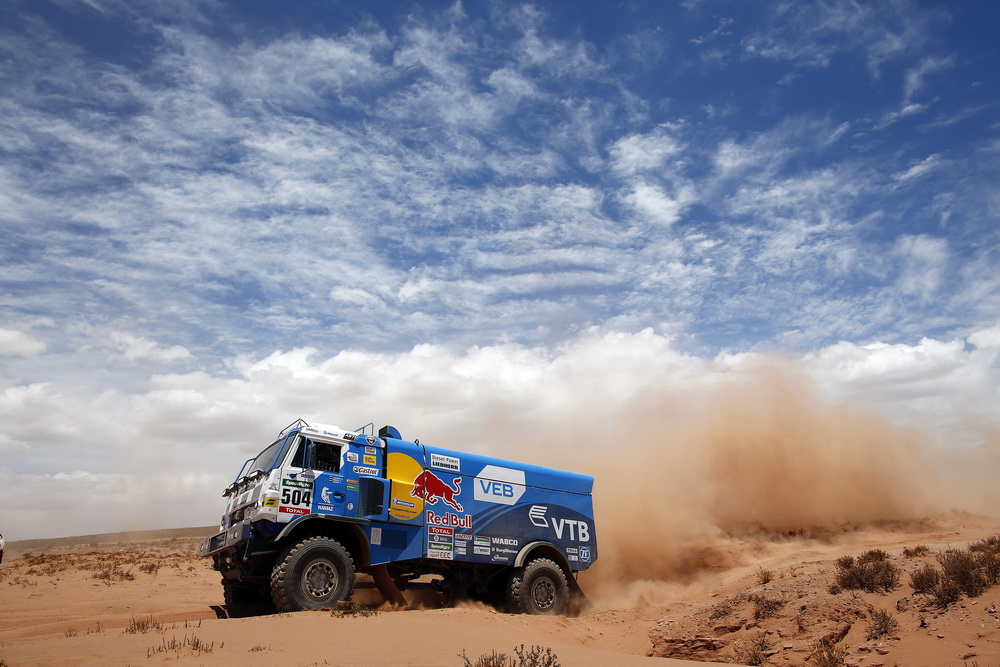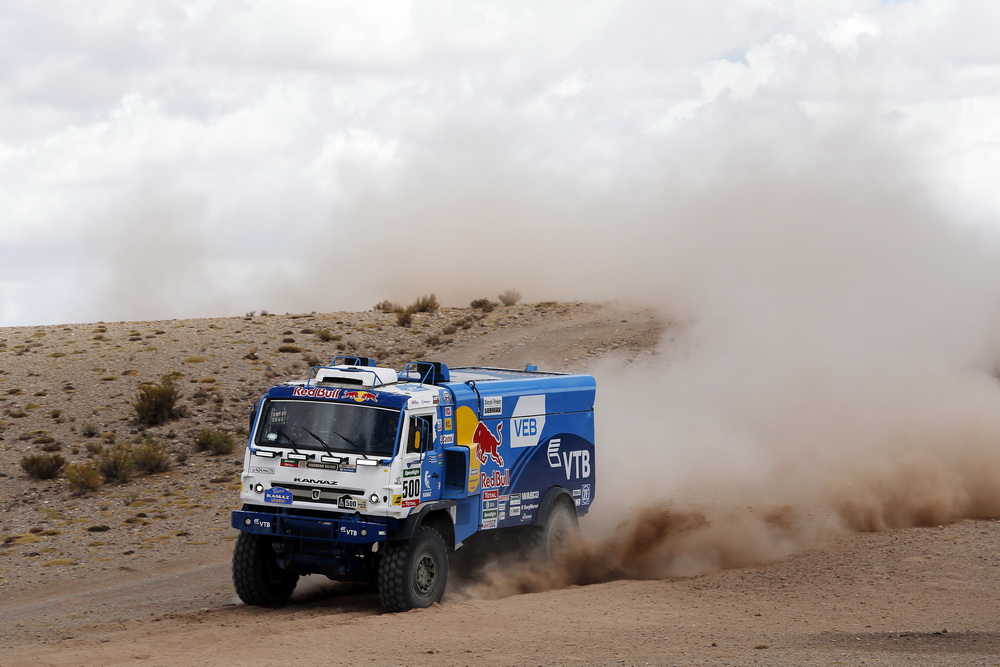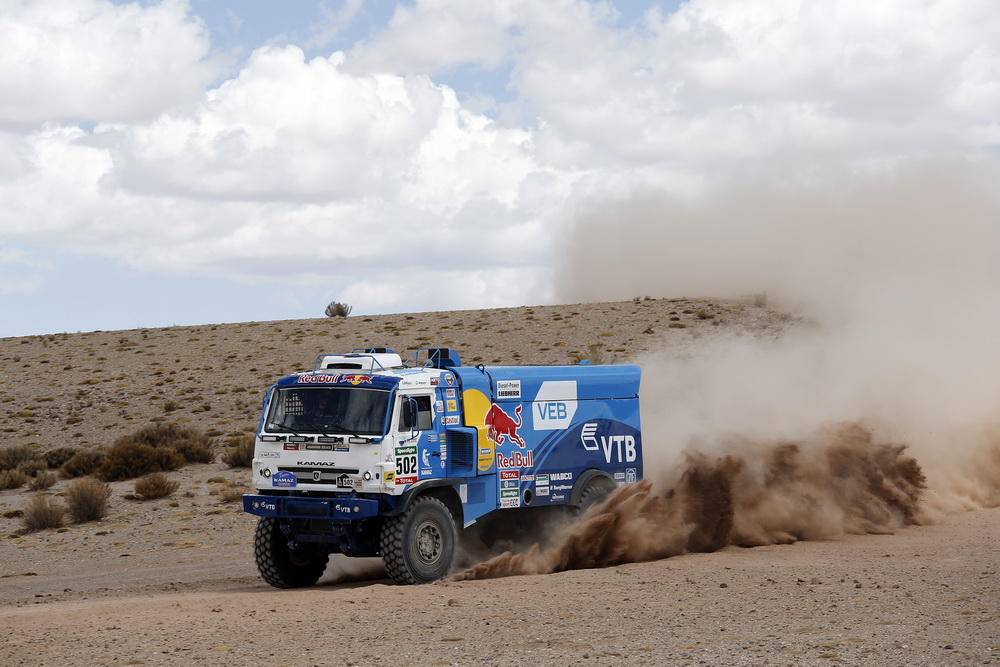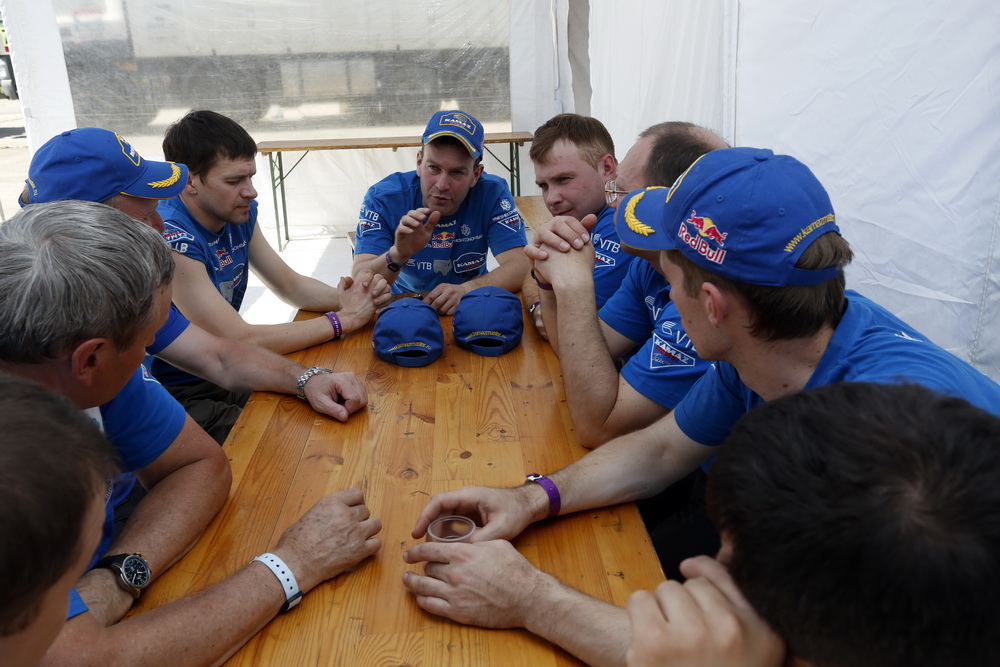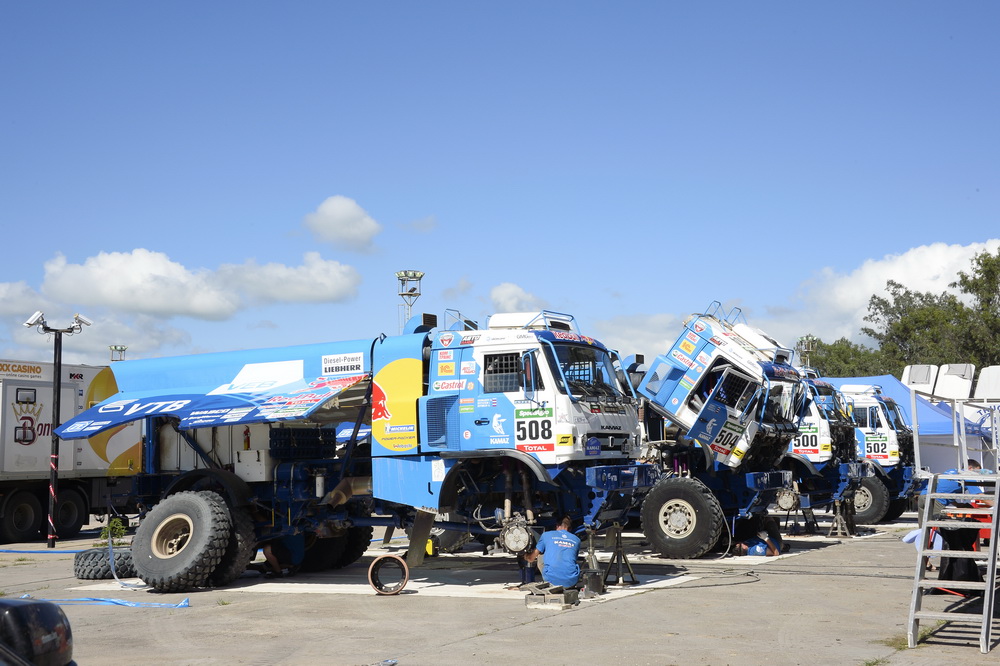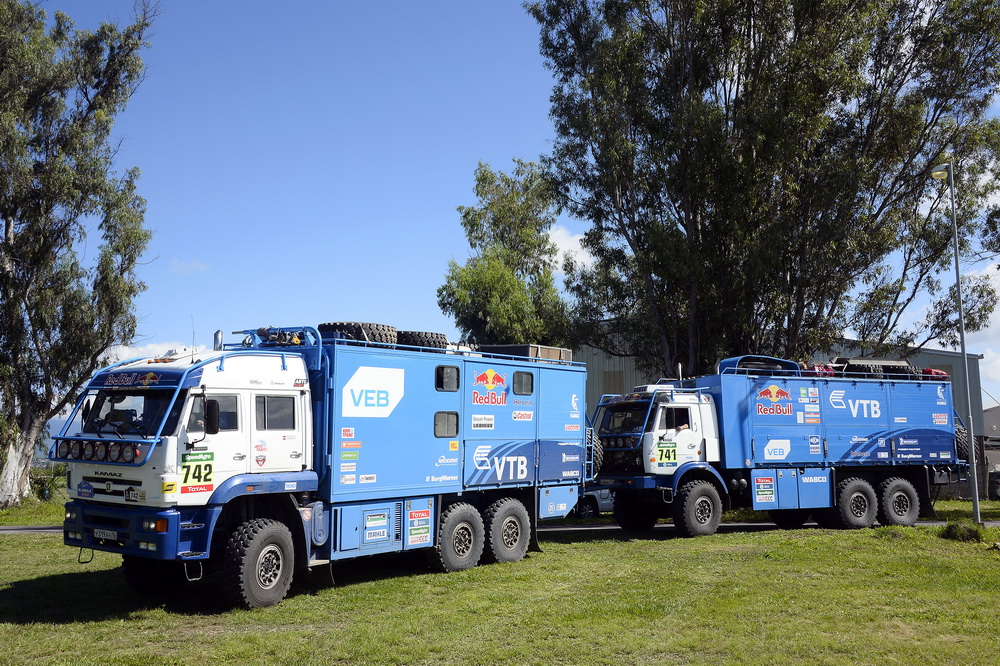
Salta, 10 January
In the end of the first part of Dakar 2016 “KAMAZ-master” team seems to have got its act together after the onslaught of their rivals. The rally-marathon turned to have an unexpected fast start. On January, 9 the race left Bolivia. Eduard Nikolaev was the best on the stage Uyuni – Salta. Airat Mardeev showed the second time. Pieter Versluis (MAN) took the third position, Andrey Karginov was the 5th. Dmitry Sotnikov is on the 16th position. The Czech pilot Martin Kolomy (Tatra) seemed to have left the fight for leadership. At one tough landing his cab nearly came off the frame – he had to finish the stage with a big loss of time. Hans Stacey (MAN) lost time while changing the wheel.
It is Pieter Versluis who leads the general classification. Gerad de Rooy is the second-best (+5:31), Airat Mardeev is the 3rd (+10:48) and Eduard Nikolaev is on the 4th position (+10:54).
The 10th of January is announced a rest day on the race. Mechanics are the main heroes of the day. They have a vast set of works: from preventive replacement of springs to adjustment of engine settings. Vehicles must be prepared very well for the second, the most important part of the rally. While the work is humming on “KAMAZ-master” bivouac, the leader of the team Vladimir Chagin commented on the first part of Dakar.
-Vladimir, that is so called ‘rest’ day. We would like to hear a short summary of the first part of the rally.
-Today is a rest day in Russia and tomorrow all the people in Russia start work after the New Year holidays. Employees of our KAMAZ plant, viewers of the race will meet, share their impressions, opinions, emotions about stages they have seen during the first week of the race. The guys played their heart out yesterday in order to fill today and tomorrow with positive emotions. All the week we kept all our viewers on the edge of their seats. Believe me, the pressure is very high, it is very hard to fight, the preparation level is high, too. Everyone wants to be the first, everyone wants to win. The fight shows it very well.
-However, yesterday the team could improve positions in the standings.
-Yesterday our crews went above and beyond on the last Bolivian stage. I certainly told them that safety overweighed the fight and the result. The guys passed the stage accurately. At least one crew needed to be in the top three before the rest day, it would rise our hope. Our team did it, today one of our trucks is in the top three in the general classification.
-The first half of Dakar is quite specific this year, isn’t it?
-There are a lot of new things on Dakar. First, the prepared routes – it is an absolutely new concept, of a very high-speed. Imagine: flat roads of more than a hundred kilometers long. Dakar has never offered this before. For instance, we expected hard trails in the mountainous territory in Bolivia, but the race organizers mapped the route on flat areas, with curvy roads and a lot of speed limiting points. Never have there been so many speed limits The participants go at the maximum permitted speed of 140 kmh .When the crews pass settlements, they reduce speed and drive at permitted 30 or 50 kmh, then they increase the speed again… In fact, it is all the special section consists of. It may be said without exaggeration that the suspension does not work this year. It is the first time during the rest day we do not replace rear springs, we even thought about leaving the front ones, too. This is the race of brakes.
-The fight is extremely tough this year, what goals do the rivals set?
-It should be mentioned that all the leading teams in the truck category are very well prepared for the race. It inspires respect. They are IVECO, MAN and TATRA. You see their pace. They have very good engines. Row six-cylinder engines show a better performance of dynamics than our V-engine. Our one makes a good performance on trails, in sands, etc. On a short distance, where it is important to take a fast run, the engines of our rivals are better. Our pilots prove it; it is difficult to compete with them. Also the braking system of our competitors’ trucks are with jet brakes. This modern function gives a good braking effect. Unfortunately, our engines do not have it. We will definitely work on it, as technically it makes a gap on the very type of the route, which organizers suggested in the first half of Dakar.
-So each year the competitors will have to guess what Dakar is going to be: fast in WRC-style or extreme off-road? Or the kind of Dakar we are used to is already dead and there will be no more Dakar with sands, dunes and challenging navigation?
-The tendency is hard to describe. It depends on the view of the organizers, the place where it will be held next year: in the South America or the route will be mapped on other territories… The concept changes. It seems independent from the country. Our racers mention when they go along flat rally routes, on the right and left they see challenging trails, narrow roads, hills. However, the race organizers mapped the route where all drive at the maximum speed. As a result, the leaders finish with a gap of 8-10 minutes. The organizers may have intended to bring something new and they managed to do it. But it is their decision. We drive on the route we are offered. We must respect their decision.
-Everyone has his or her own Dakar. Today I would like to mention a heroic act of assistance: the pilots drove through 1000 km on mountainous serpentines.
-Not only drivers, co-drivers and mechanics of sport crews take part in the race. There is an assistance group in each team. These guys service the vehicles every night, huge responsibility lies on their shoulders and a crucial role in the result. If a mechanic misses a fraction, will not tighten a nut or correct adjustments – that is a failure! The team will not have any results the next day. Large-tonnage assistance truck drivers inspire respect as well. They drive 40 ton trucks in the mountains, at the altitude of 4000 metres: ups and downs, ravines, serpentines. I don’t remember such a liaison in the whole history of Dakar. The time for the assistance route was 21 h. Although we spent almost 5 hours in the traffic jam, as rivers flooded because of the rain. The road was closed. So, the assistance team left yesterday at 6 a.m. and today came only at 6 in the morning. The drivers spent 24 hours at their wheels!
-6 more days of the race left…
-La Rioja and Fiambala are ahead. There were trails in the past. We don’t know where the route has been mapped this year. But we would like to have more opportunities to implement capability of our trucks and pilots. We are more adapted for challenging routes, impassibility, all that we are used to see on usual Dakar. This year it is absolutely new and it is hard to keep the rivalry. We will continue to fight and try not to be a grief to the supporters. Thank you for being with us!
Eric Khayrullin, Press Officer of “KAMAZ-master” team
